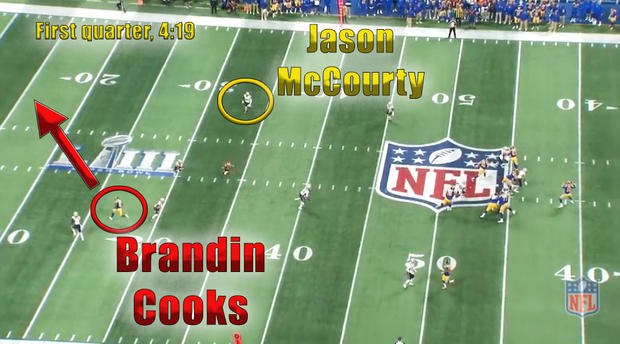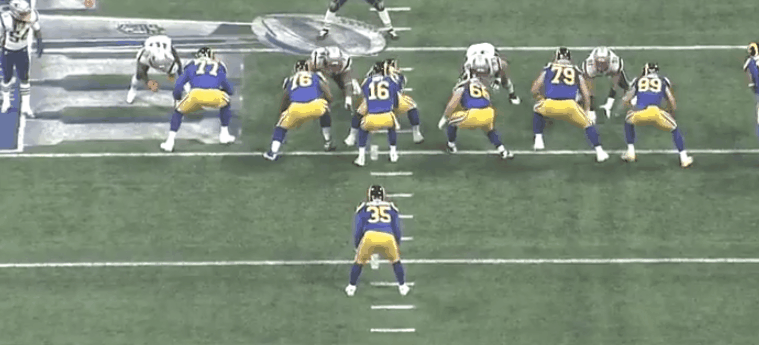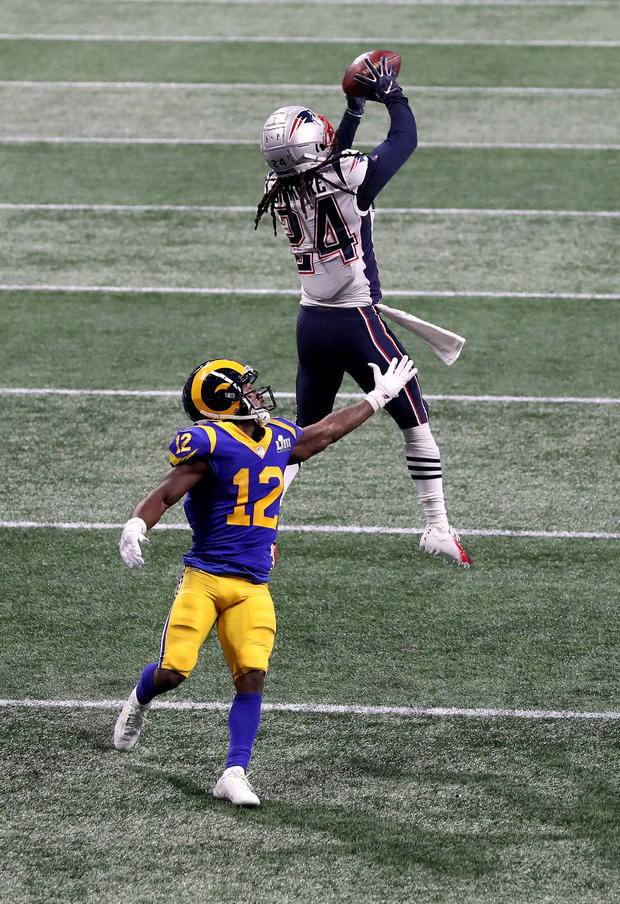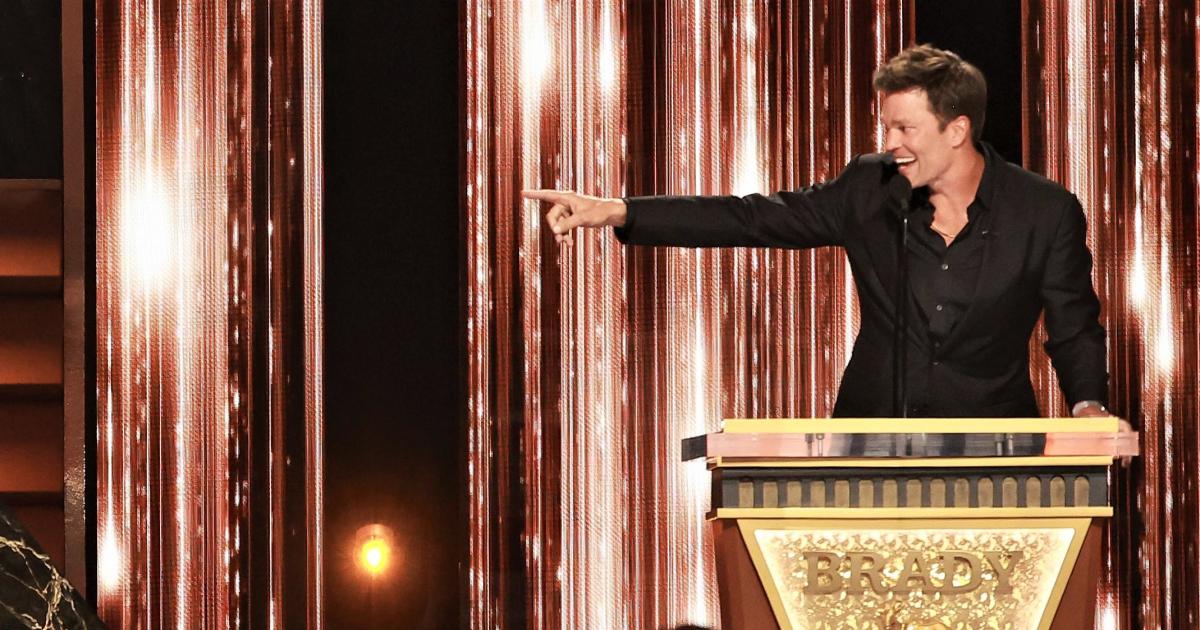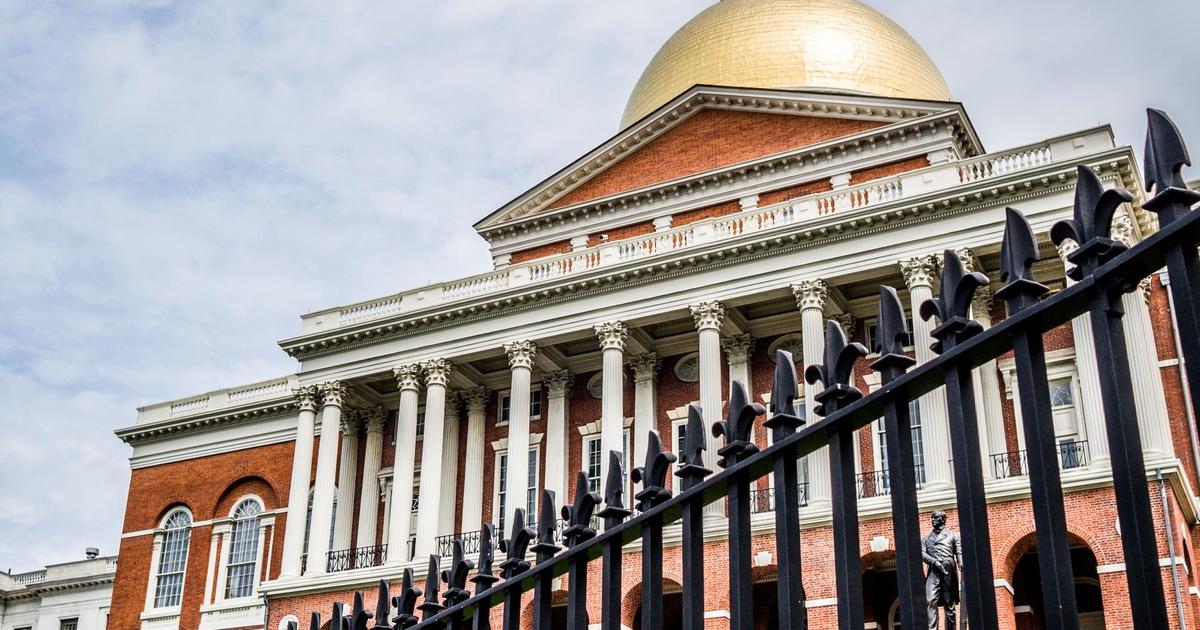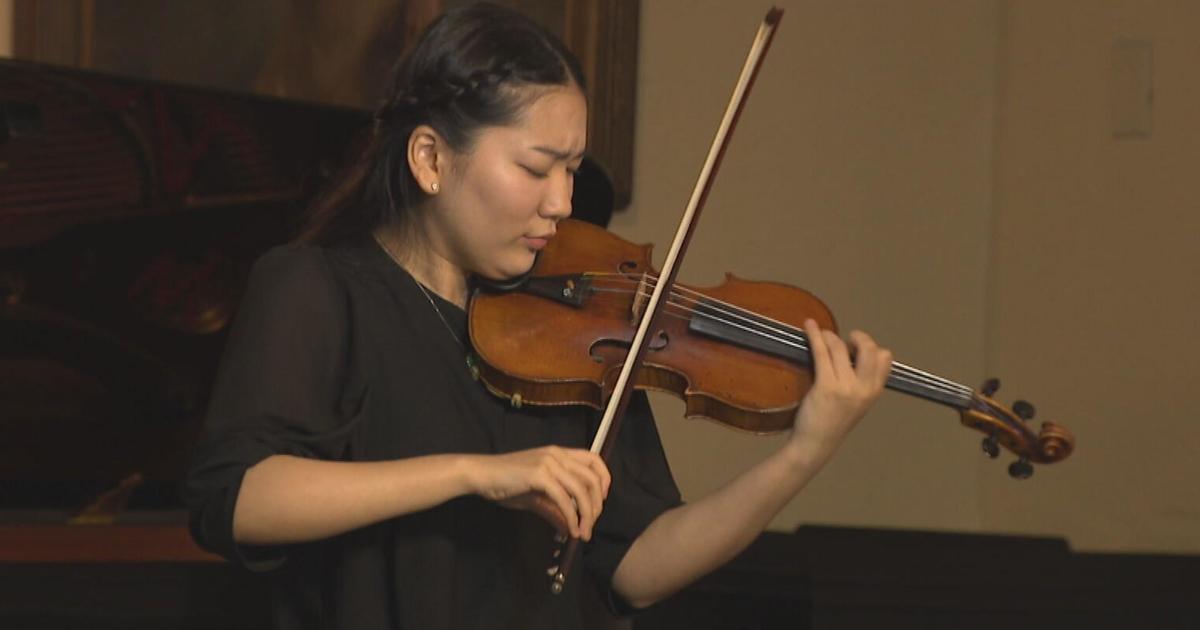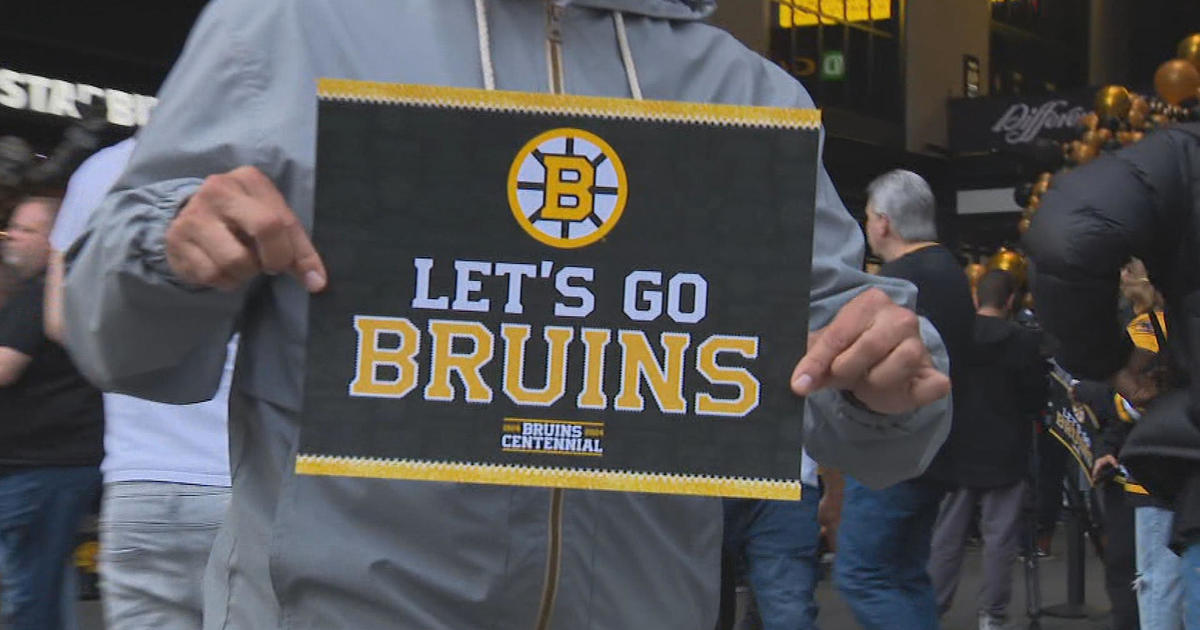Josh McDaniels Drew Up Key Play, While Sean McVay Might Have Let Down Jared Goff In Super Bowl LIII
By Michael Hurley, CBS Boston
BOSTON (CBS) -- After an impressive victory over the Rams in Super Bowl LIII, there's been a lot of credit to pass around. Now, it's Josh McDaniels' turn.
The Patriots' offensive coordinator capped off a whirlwind calendar year with some impressive work when it mattered most against the Rams. Though the Patriots overall struggled to put points on the board, the most important drive of the game began with some creativity and spontaneity from McDaniels.
As highlighted on "NFL Turning Point," the play that kick-started the Patriots' lone touchdown drive of the night was not one that was in the game plan. It wasn't even in the playbook.
The 18-yard pass from Tom Brady to Rob Gronkowski at 9:49 in the fourth quarter of a 3-3 game was drawn up by McDaniels on the sideline. The Patriots had largely been running the ball on first down to that point, so the play included a play-action fake, with Gronkowski initially selling that he'd be staying in to block. After absorbing a shot from linebacker Samson Ebukam, Gronkowski broke out on a fade route toward the right sideline.
Given the sell, Gronkowski was easily able to get a step on the linebacker. Brady floated a perfect pass to hit Gronkowski in the hands in stride, and the play went for a big gain.
"When did we put that in?!" receiver Phillip Dorsett immediately asked running back James White on the sideline.
"Just, on the sideline, like literally two seconds ago," White replied.
"We put a few different plays in. The pass up the sideline on the drive too, we put play in right there on the spot," Gronkowski said after the win. "It was a great job, great throw by Tom, great call by McDaniels."
From there, McDaniels basically turned into a kid playing Madden on Xbox and really liking the same play. That play was called HOSS Y-juke, and McDaniels called it three times in a row.
With the running backs split out wide and running hitches, the tight ends in the slots ran seam routes. The slot receiver is also free to run an option route over the middle of the field.
The first time the Patriots ran this on the drive, Brady threw to Julian Edelman, who easily got open against a linebacker in space, for a gain of 13.
On the next play, Brady went with a quick pass to Burkhead, running the hitch on the left sideline, for a gain of seven yards. Gronkowski, who had switched places with Dwayne Allen and moved from the right slot to the left slot for this play, appeared to have gotten a step on his man while running the seam route on the left side on that play, so McDaniels noticed and didn't mess around.
The Patriots went back to the same play, this time adding some pre-snap motion with Edelman, which led to some confusion on the Rams' side. Linebacker Cory Littleton was late in getting over to cover Gronkowski at the line, thus giving the tight end a free release and an early step on his defender.
From there, it required a perfect pitch and catch from one of the greatest quarterbacks of all time to one of the greatest tight ends of all time. They connected.
"I knew it was gonna come to me, I just had a feeling," Gronkowski said. "We ran the play like two plays before, I kind of beat the guy and had a little leverage. McDaniels saw it, he repeated the play again. Tom threw that ball where it needed to be, I went and made the play."
The Patriots plunged in from the 2-yard line on the next play, scoring the winning points of the Super Bowl.
Overall, the 13 points on the scoreboard represented a major step backward for a Patriots offense that scored 41 points in the divisional round and 37 points in the conference championship. But the Patriots still did gain 407 yards in this Super Bowl, dominating time of possession for much of the game. And when it came to crunch time, the creativity of McDaniels -- and the ability of Brady, Gronkowski and the rest of the offense to execute -- paid off in the biggest way possible.
Other quick notes from "NFL Turning Point" ...
--The play Jason McCourty made to break up the easy touchdown to Brandin Cooks did not happen by accident. The Patriots were very much aware of a vulnerability in their defense when they ran quarters coverage, as Cooks had sprung wide open on an identical route concept earlier in the game. On that play, quarterback Jared Goff was unable to get the ball to Cooks, due to the pass rush closing in.
But both teams saw it, and the Patriots knew they'd have to adjust if a similar play came at them again.
Here's the first time the play came up, with 4:19 left in the first quarter:
Immediately, both head coaches knew what happened.
"Did we have that or what?" Sean McVay said into his headset.
"Let's go back over that call, that's our call," Belichick said into his.
That drive ended when Patrick Chung hit Robert Woods to break up a third-down pass, and once the teams got to their respective sidelines, they talked about the play that could have resulted in a long Rams touchdown.
Patriots defensive play caller Brian Flores: "Are we four here?"
Jason McCourty: "Yeah I gotta push to the post."
Flores: "You HAVE to. We need you on this post. That's for you to go get."
Devin McCourty (to safeties coach Steve Belichick): "Jay just gotta keep climbing."
Steve Belichick: "Keep climbing up top."
Devin to Jason: "Mac, you see that four, just keep climbing."
Jason to Devin: "Yeah, we talked about it right after the play. I said to Steph [Gilmore], I gotta get to that one."
A Rams coach -- I believe receivers coach Eric Yarber -- said to Cooks, "Hey, we're going to come back to that pylon post."
Cooks knew it'd work if the Rams ran it again.
"Yeah, we gonna get it. They play quarters coverage, we'll go over the top."
Sure enough, the Rams did run it again -- this time late in the third quarter, coming out of an L.A. timeout -- and despite all of that earlier discussion, the Patriots weren't exactly ready for it. Cooks sprung free, as he expected, but Goff was not anticipating that release. The quarterback was late to pull the trigger, which gave Jason McCourty the split-second he needed to turn on the jets and break up the pass -- making what may well have been the defining defensive play of the Super Bowl.
This scenario played out exactly as everybody expected it to. Even still, Jason McCourty was a split-second late in recognizing what was coming. The reason the play didn't go for an easy 29-yard touchdown is because Goff did not anticipate it properly.
McVay talked to Goff on the sideline afterwards.
McVay: "Hey did you see [Gilmore] drop [Cooks]? That's what happened on the pylon post, too."
Goff: "I saw it late."
McVay: "Yeah, that'd be one of those deals where if you see him, everybody jump him."
Goff: "That's what happened. I saw it and I was like there must be nobody over the middle."
This was the Rams' greatest missed opportunity of the night, and some major blame should fall on McVay's shoulders. The Rams knew this play worked earlier, and as already mentioned, they had just taken a timeout before this snap. If this was indeed going to be the play call, the coach should have reminded Goff to look for Cooks first and foremost. Had McVay done that, Goff would have easily thrown the touchdown. Instead, Goff wasted time going through his progressions, from C.J. Anderson in the left flat to Robert Woods on the deep crosser and then to Cooks on the deep post.
Watch Goff scan the field here after making the play-action fake, instead of looking right to Cooks:
To recap: The Rams called timeout, and nobody told Goff to look immediately for Cooks after making the play-action fake.
In the Super Bowl.
Ouch.
Even still, had Goff delivered a better ball, it's likely the reception could have been made. So in the concurrence of Jason McCourty being a half-second late to recognize the play and Goff being a full second late to recognize the situation, it was McCourty who was able to up the most ground.
--The other defensive play of the game was, of course, Gilmore's interception. "Turning Point" captured this play perfectly, spotlighting the seven Patriots rushing the quarterback against six Rams blockers. That allowed Duron Harmon to break in untouched at Goff to force an early and poor throw to Cooks.
We know what happened from there.
Interestingly, though, "Turning Point" showed what Cooks said at his postgame podium: Cooks said he was just going for a pass interference penalty instead of fighting for the football.
"It was just one of those plays. It was cover-zero, quarterback had to get the ball out of his hands." Cooks explained. "My reaction, more so, was to try to really get a PI. But I wasn't really able to."
It was unclear whether Cooks meant he was trying to draw a pass interference on the defense, or commit a pass interference penalty to prevent the pick. But given his history, the former option makes sense.
As Patriots fans saw firsthand last year, Cooks has an incredible knack for drawing pass interference penalties. In Cooks' dynamic performance against the top-ranked Jaguars defense a year prior in the AFC title game, he caught six passes for 100 yards and also added 68 yards for the Patriots in pass interference penalties. It's for sure a skill of his.
But on the Gilmore pick, it was the cornerback who had eyes on the ball the entire time. Cooks went flying by the cornerback, who went up to high-point the pass, barely able to lay a finger on him.
It begs the question: Would Cooks have had better success if he was more concerned with looking back and playing the ball instead of trying to draw PI? Maybe, maybe not. It's impossible to say. But what we do know for sure now is that going for PI in that moment did not work out in the least.
You can email Michael Hurley or find him on Twitter @michaelFhurley.

